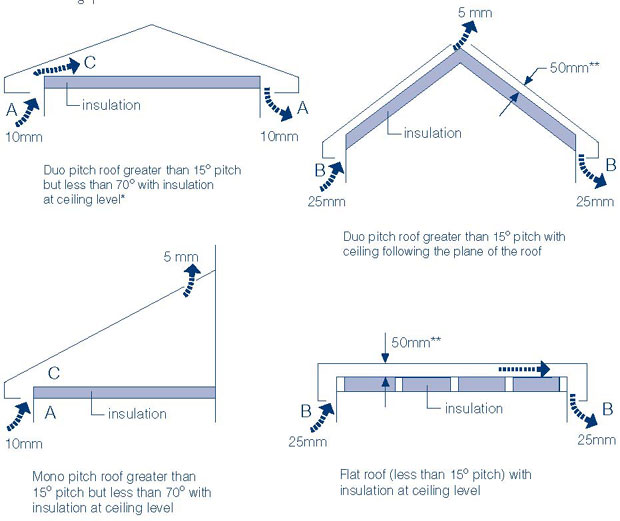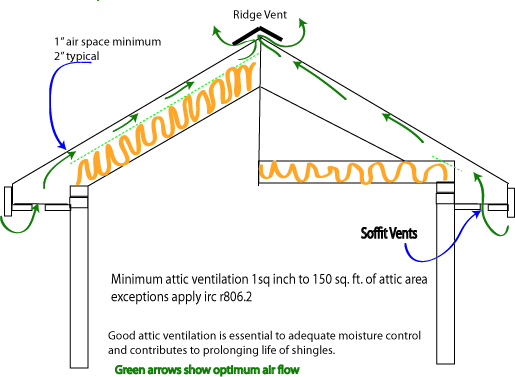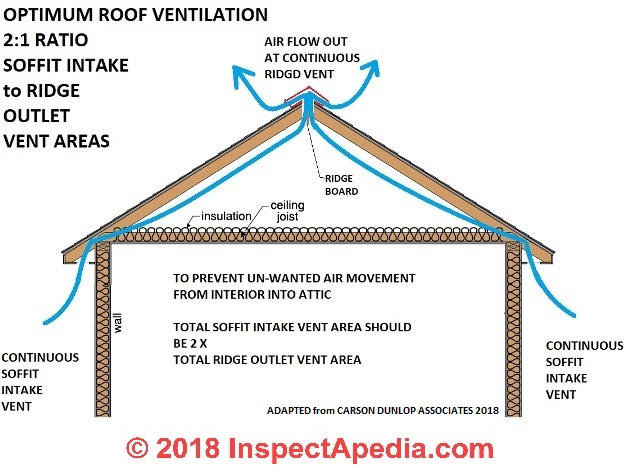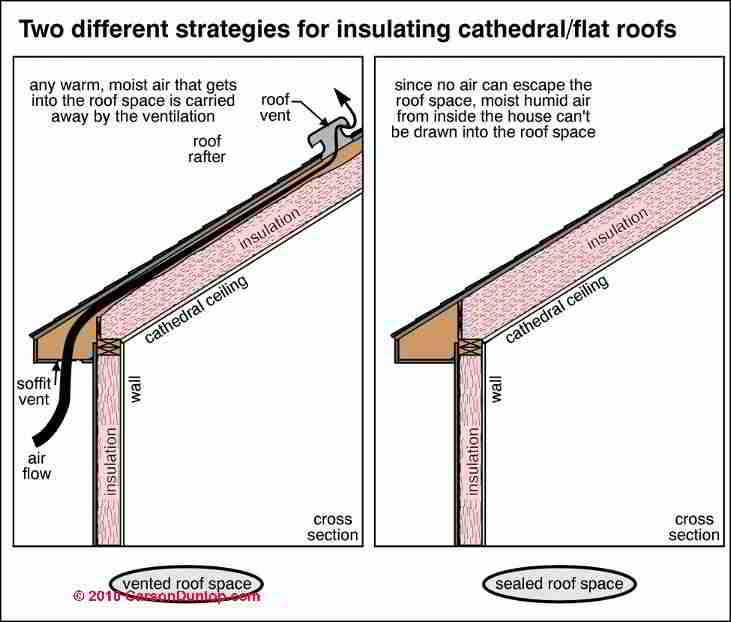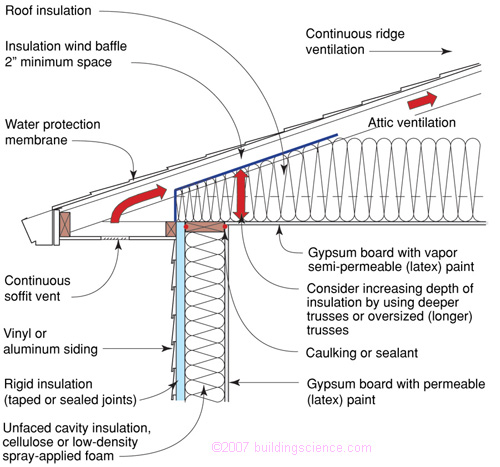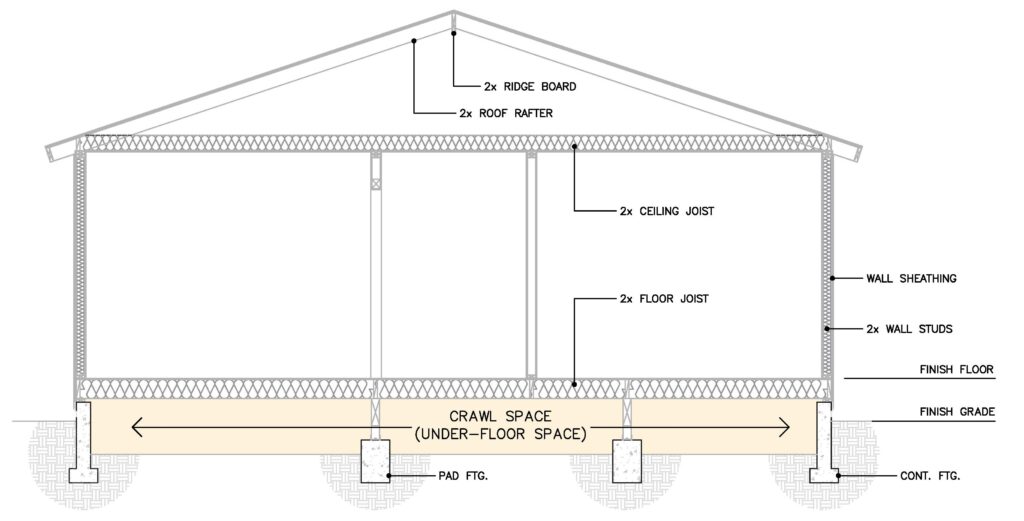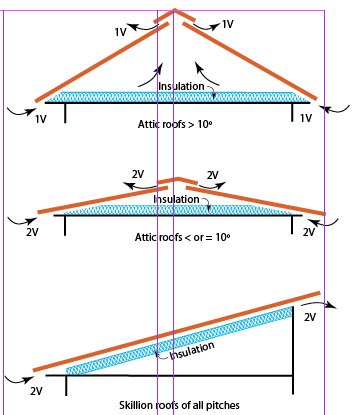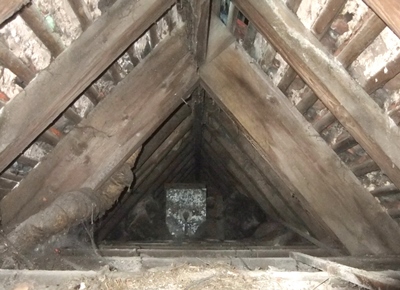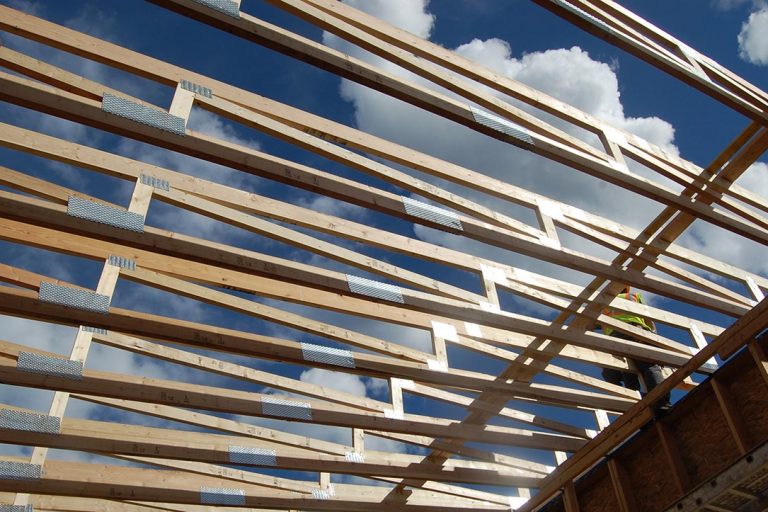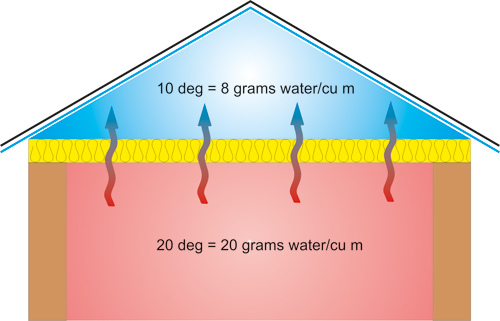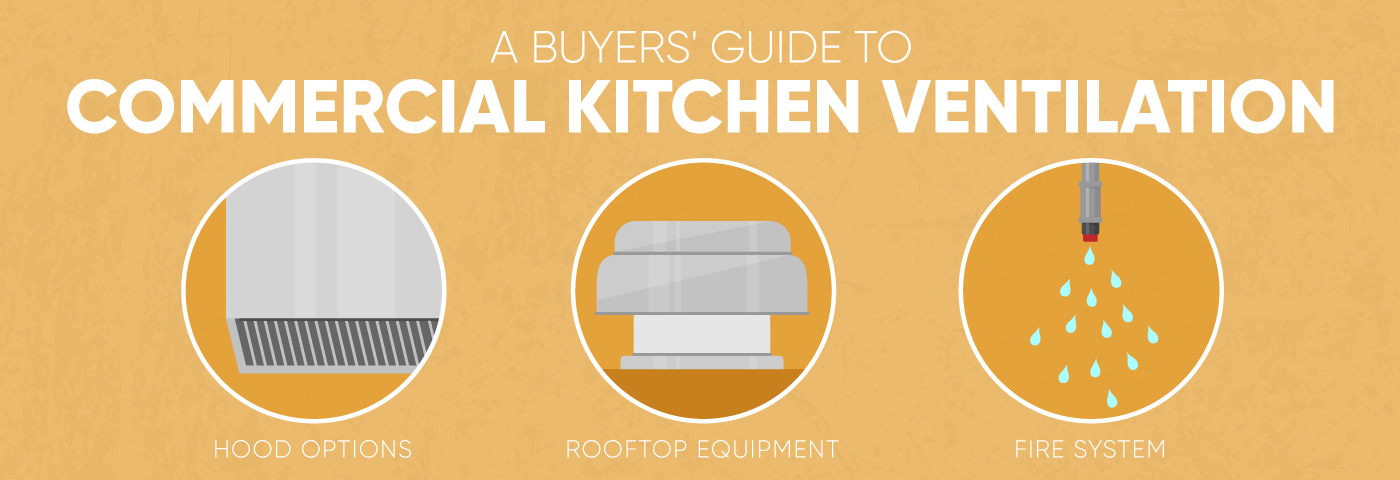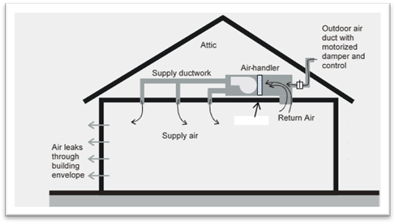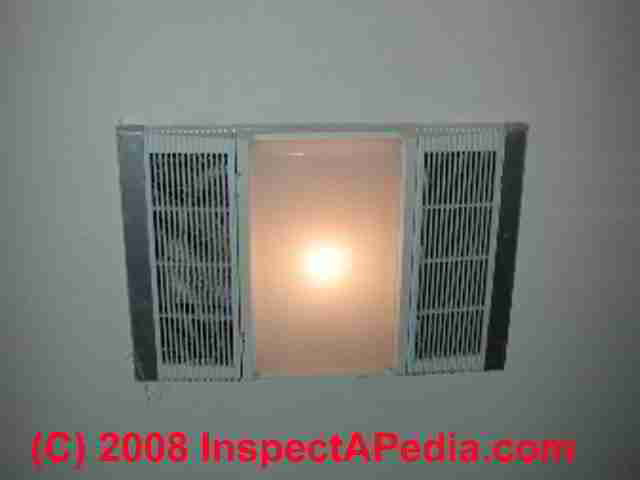Roof Space Ventilation Building Regulations

Ventilation 2010 edition incorporating 2010 and 2013 amendments ref.
Roof space ventilation building regulations. Condensation encourages rot and mould growth. 1 300 ventilation ratio recommended. The recommended ventilation ratio to provide for vented attic assemblies when an air barrier is present is the 1 300 ratio as specified by most building codes. In many pitched roofs a ventilation slot is built in along two opposite eaves so that air can flow across the roof space.
Cold roof with impermeable hr underlay if a building is 10 metres wide or more or the roof pitch 35 degrees or above then 10mm eaves ventilation is required together with 5mm ridge ventilation. And current best practice. In of vent opening per 150 sq. If a building is less than 10 metres wide and the roof pitch is less than 35 degrees then 10mm eaves ventilation is required.
Duo pitch roofs greater than 200 pitch or greater than 10m span should have additional ventilation at the ridge to assist airflow through the roof void equivalent to at least a 3 mm wide continuous gap. Then aim for about 1 sq. The building code lets you reduce that by half under some conditions but more roof ventilation is usually better. When ventilating a roof the air should be able to enter at one end and travel through to the other end where it can exit.
Ventilation of attic spaces is required by most building codes as well as by roofing material manufacturers and the national roofing contractors association nrca. If not measure the size yourself. Roof insulation thermal resistance at roof perimeter should be equal or greater to thermal resistance of exterior wall. Most building codes require a ratio of 1 150 ventilation space to attic floor space.
If the attic is equipped with high and low ventilation openings the requirement is 1. Therefore it s important that the ventilation slots aren t blocked. Cold roofs versus warm roofs. Both building regulations and nhbc require ventilation to be provided in roof spaces.
The air gap dimensions shown on the drawings are the minimum widths required for clear continuous ventilation air paths at the eaves. Around 25 per cent of heat loss occurs through a building s roof but high levels of insulation in historic roofs can be counter productive sometimes even accelerating heat loss in the long term. Roof voids must be ventilated in order to stop warm air condensing on cold surfaces. The roof space isn t intended to be a storage area so if you do put items up there you.
Ventilation is not required to a warm roof system which is where the insulation is placed above the joists or rafters. You can also contact your local municipality to check on building code in your area. Jonathan taylor s article unpacks the key issues including the role of moisture ventilation and buffering. The open area of a vent is sometimes listed on the roof air vent as nfva net free vent area.
